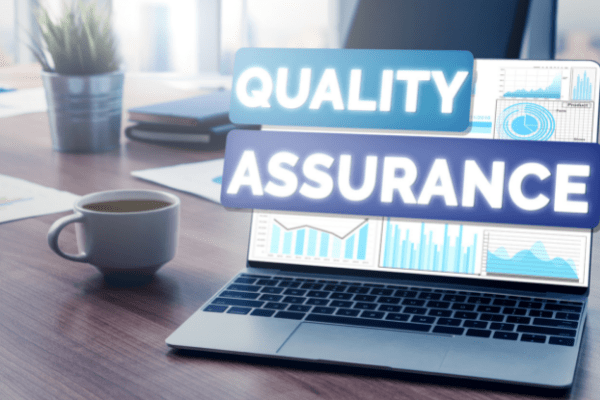Shopping online has developed into something massive over the last few years. Nobody could’ve foreseen what internet development would bring to the table. In the last 10 years or so, people would go into malls, shopping centers, and basic shops to do their purchases. Nowadays they only need an internet connection and a device to buy whatever they like.
This whole shift in managing goods and selling them has brought new standards of eCommerce user experiences and eCommerce agencies are following them to ensure a smooth process for both the merchants and the shoppers. That being said, the whole process is being optimized as well as possible without losing track of the final purpose: serve the client as fast and easily as possible. And how do we do that?
Well, to be sure that the whole operation is ok, professionals have developed eCommerce testing.
What is eCommerce testing?

Simply put, eCommerce website testing is a process that will test several variables of your website to make sure the ultimate performance is achieved and all these features are at their highest functionality. The objective of the eCommerce testing strategy is to ensure software reliability, quality, and optimum performance.
Let’s imagine what could go wrong with an eCommerce website. For example, a few milliseconds of delay when someone wants to buy something and the customer aborts the process. Or the same milliseconds in delay when loading the page and the customer will move on to the next website. A search bar missing, or a filter being misplaced could make a potential customer exit from your website and reach the competition instead.
Here is a list of what to look for when testing an eCommerce website and why this is such an important thing:
Enhance user experience
Engaging users are hard to find, so when they do reach your website you need to make sure they get what they are looking for. And not only get what they are looking for but do so with maximum efficiency. Therefore, eCommerce testing services are essential to make a user commit.
Increasing conversion
That brings us to the next thing done by an efficient eCommerce testing experience: the increase of conversion rates. By testing every aspect of your online shop the user is bound to have the best experience possible, thus converting into a client.
Consumer behavior awareness
All of the above lead to a great factor in future sales: creating and understanding the pattern a consumer follows. Often you don’t know what the user needs to become a client so you optimize the website by observing its behavior while there. It is not possible without eCommerce site testing.
As you can see they are all interconnected and somehow determined by what the ultimate purpose is: to serve the user and do it so well that he’ll return.

Let’s see how to test an eCommerce website. Some of the most common methods to use are:
eCommerce performance testing
When we talk about performance on an eCommerce website we talk about speed, scalability, and stability. According to Unbounce 7 out of 10 users say they will leave a site if the loading speed is too slow. So it’s no wonder performance testing needs to be the top priority for every online store.
eCommerce functional testing
All websites have a lot of functions these days so checking that each element functions as it should, needs to be mandatory. It is also one of the most time-consuming tests there is. Therefore, this method has already an alternative in eCommerce automation testing. There are several tools that testers will use to ensure the website is operating as it should.
Mobile testing
When testing a website online we also need to look at the devices it will run onto. Mobile shopping is now trending and so the functionality and performance of a website need to be the best on mobile devices.
Security and login testing
Before testing anything else on the website you need to check the security and login. The login is where the most hacking takes place so that means a thorough check-up before everything else. eCommerce website test cases come in handy especially in this kind of testing and they must follow certain scenarios to ensure the test areas behind the login are secured.
System integration testing
This is the overall testing for the whole system before release or, in special cases, when there’s a major threat. This kind of testing must follow the eCommerce website testing checklist and make sure all the software and sometimes the hardware is functioning at full capacity. Its objective is to see if the pieces work together perfectly and that means those “pieces” passed the testing.
Content analysis testing
It’s important to test the content on your website, images and text description, and also SEO components that will help you rank your website on the search engines.
eCommerce usability testing
If you need to see what the users are seeing, how their experience on the website feels, then this is what needs to be tested. Usability testing is a way of measuring how user-friendly your website is. Into the eCommerce testing process, this kind of evaluation is what determines how good the final product is.
eCommerce AB testing
To see if an option is better than the other testers use this type of examination. A B testing eCommerce is the ultimate tool for discovering the way towards a great website. How is it done? Testers will present half the users with a different version of a page to determine how some of the elements will score.
You can always find an exhaustive list on the Ecomitize services page where we use an array of eCommerce website testing tools to make sure everything functions just right.
Test Cases

These are only some of the things that could undermine the functionality of your website. But as you have to start somewhere let’s see what are the top four test cases for the eCommerce website:
Homepage
This is the first marketing tool your website will need to use to create engaged users and make it a memorable experience. Whether your homepage is also your landing page or not, make sure the customization and also the performance is on par with the rest of your website. When trying to optimize the eCommerce testing process regarding the homepage, take into account if there is auto-scroll on the page, is it loading at a decent speed, if you click on several items do the links take you to the right products, is it customizable and offers a great visual experience, is the rest of the site visible? Upon answering these questions, you can take the testing to another phase: eCommerce A B testing ideas.
Shopping cart
Considering the rate of shopping cart alienation, the shopping cart feature needs intensive testing. People who put products in the cart and then exit the website are lost customers and you need to figure out why. We have some help from Baymard Institute did a research and came up with the following: 49% of those who abandon the cart consider the extra costs too high, 24% are upset because they needed to create an account to complete the transaction, 18% consider the checkout process too complicated and long, 17% couldn’t calculate the total cost, 19%the delivery was taking too long, 12% website had errors and 17% didn’t trust the website with the credit card information.
So what are the eCommerce testing tools to insure such things wouldn’t happen? Knowing what the customer’s reasons are for leaving the site in the middle of a transaction you can try various options to remedy whatever the problem might be. Check the list above and see if your shopping cart has those problems.
Search page
This is one of the most used categories on a website. That means it must function quickly and find the products the users are looking for fast.
Ensuring that the search bar is bug-free and offers a great buying experience will make your site successful. This is yet another area where AB testing for eCommerce will come in handy. For example, you could put the search bar in a visible spot, make sure you find out the ideal number of products to appear from a search, adapt your search bar to fit on any other page or the homepage as well.
Product details
The accurate display of product details at all times is what customers look for when they search for something on your website. You want them to make the purchase and that means they need to know details about your product. The best way to make sure this page is converting users into clients is to put yourself in their shoes. What do they need to see when they enter the page?
Tags, descriptions, reviews, images, color variations are just some of the features that a client expects. AB testing will do wonders in this department also.
Conclusion
Every eCommerce business thrives on the accuracy and efficiency of its websites. Whenever a user enters an online shop they need to have a great experience. Issues with the websites translate into lost customers and lower profits. Therefore, testing a website’s functionality and making sure everything runs smoothly all the time is the key to success.
Ecomitize is providing an array of tools and services that will make sure your user will become a happy customer.



